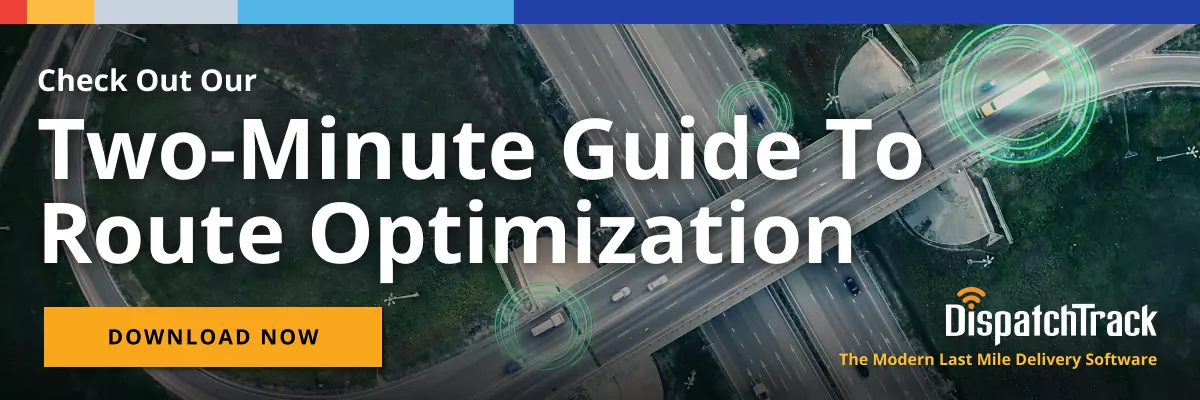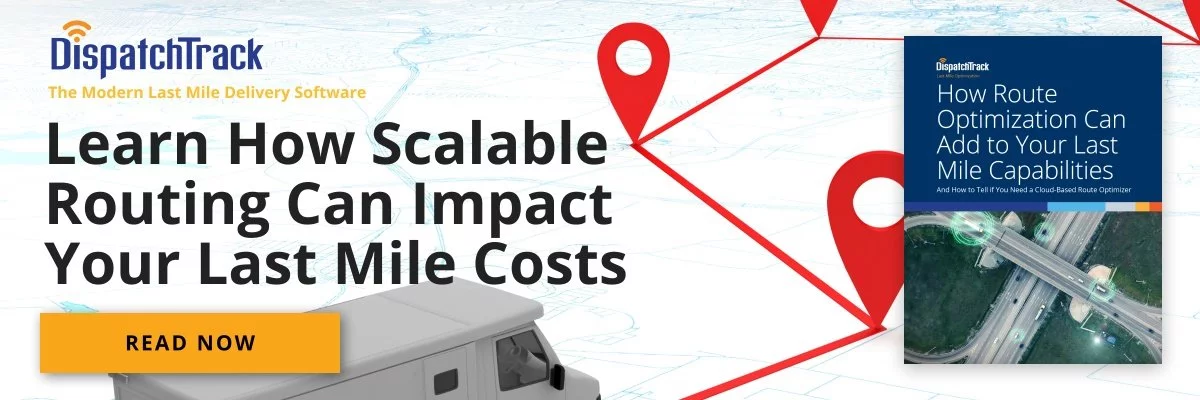Route planning software offers many benefits for fleet operators—even giving users the potential to cut down operating costs by a considerable percentage. It’s tough to overstate how transformative rapid, cloud-based route optimization can be.

That said, you can’t optimize routes in a vacuum. Fleet operators and managers must also pay attention to whether the dispatch management is working in harmony with route optimization efforts. Unfortunately, achieving harmony between efficient route planning and dispatching is not always a given.
The Basics of Dispatch Software
Dispatch management is primarily concerned with the organization, assignment, and optimization of schedules for delivery teams. Dispatch software, as its name suggests, enables fleets to manage driver assignment and scheduling more effectively.
The right software solution should help fleet managers and, of course, dispatchers to oversee all delivery trucks leaving the warehouse or distribution hubs and driving to the various drop-off points.
Effective dispatch management enables companies to maximize resources, minimize maintenance and repairs of vehicles, reduce operating costs, and satisfy customer demands more effectively. Basically, effective dispatching is a means to making the last mile flow more smoothly from end-to-end. But how do you make sure you’re actually realizing the benefits of effective route optimization and dispatch management.
Start With Route Planning
Some still depend on manual route planning processes, or apps and tools such as Google Maps or Excel to find the best routes for their delivery teams. Most of the time, the human route planner takes many hours consulting maps and plotting routes. Unfortunately, despite the laborious efforts, the human route planner still can’t generate efficient routes beyond a certain number of trucks and stops.
Aside from knowing delivery time windows, resource availability, and customer locations, planners also need to consider drivers’ availability, skill sets, average load times, average road speeds, and drive-time differences between trucks and cars. Human planners are simply not able to keep pace with modern technological tools.
Regardless of the fleet’s size, vehicles and drivers are required resources that need to be managed as efficiently as possible. When your route plans are sub-optimal, you’ll wind up dispatching assignments to drivers that fail to maximize their capacity and potentially set them up for late deliveries and irate customers.
 In contrast, route planning software can automate the route planning process and consider all variables in finding the quickest and most cost-effective delivery routes. With centralized delivery data and a powerful algorithm capable of crunching a large amount of information in just a few seconds, a modern route planning solution can overcome challenges that a human planner could never tackle effectively.
In contrast, route planning software can automate the route planning process and consider all variables in finding the quickest and most cost-effective delivery routes. With centralized delivery data and a powerful algorithm capable of crunching a large amount of information in just a few seconds, a modern route planning solution can overcome challenges that a human planner could never tackle effectively.
Making the best out of the software is more than just implementing and using. You might come up consistently with robust, efficient, and realizable route plans, but if they aren’t dispatched and implemented efficiently, then the fleet’s operations will still be filled with inefficiencies. Here, if you’re using two different solutions for these two processes, there’s always a chance of silos and poor integration creating bottlenecks and other fleet dispatching issues.
Aside from failing to realize the expected return on investment (ROI) from the route planning software, companies will also have to endure poor customer satisfaction, as the lack of proper dispatching will result in missed or late deliveries. Likewise, if route plans were created from inaccurate or incomplete information, then delivery teams will continue to miss the promised delivery time windows.
Dispatching Matters
You don’t want to find yourself in a position where your perfectly optimized routes aren’t translating into improved delivery performance. This is where dispatch software comes in: the right tool can help you allocate drivers, delivery, and equipment as efficiently as possible. Some advanced last mile logistics solutions even have an automatic dispatching feature so that companies don’t need separate solutions for route planning and dispatching.
The dispatching feature or software assigns routes to drivers quickly and easily, giving them visibility into route plans without requiring a ton of manual effort on the part of dispatchers.
Instead, these key personnel can use their time and efforts in ensuring that the entire last mile goes off without a hitch. This might include collecting feedback from delivery teams and customers and working to improve delivery performance over time.
Continuous Improvement Is Crucial
The effectiveness of route plans is not static, meaning these plans can always be improved. One way to do this is to get feedback from delivery drivers. Dispatchers should ask drivers if they are experiencing any issues on the road, delivery drop-offs, or at warehouses and distribution centers. Drivers’ feedback can then be incorporated into the route planning process—for instance, you might be want to adjust the amount of service time you bake into the time window estimates for each stop based on how long drivers in the field are actually taking to do particular kinds of deliveries or installations.
Getting feedback constantly will ensure that the route planning actually takes into consideration real-world conditions. These can include arrival windows acceptable for certain customers or maximum weight and size of vehicles allowed in certain bridges, roads, or locations.
For example, drivers may report that a certain hub takes longer to load packages. This information can be used by route planners to allot more time for that particular hub so that the route planning software can provide the more accurate expected time of arrivals.
Today’s last mile delivery solutions are just as smart as the information one feeds on them. Route planning and automatic dispatching can find the quickest and most cost-efficient routes, and assign drivers according to their preferences, skills, and availability. Of course, planners will always need to make adjustments based on their own specialized knowledge or changing conditions—which is why you need dispatching functionality that gives you the flexibility to make adjustments on the day of delivery without throwing everything off course.
In the end, the best way to make the most out of route planning solutions is to make dispatch management more efficient via the use of the right software. Ensuring that route planning and dispatching are in harmony is the only way to maximize the benefits of route planning. Sometimes, the best dispatch software is what’s already built-in to your route planning app.

